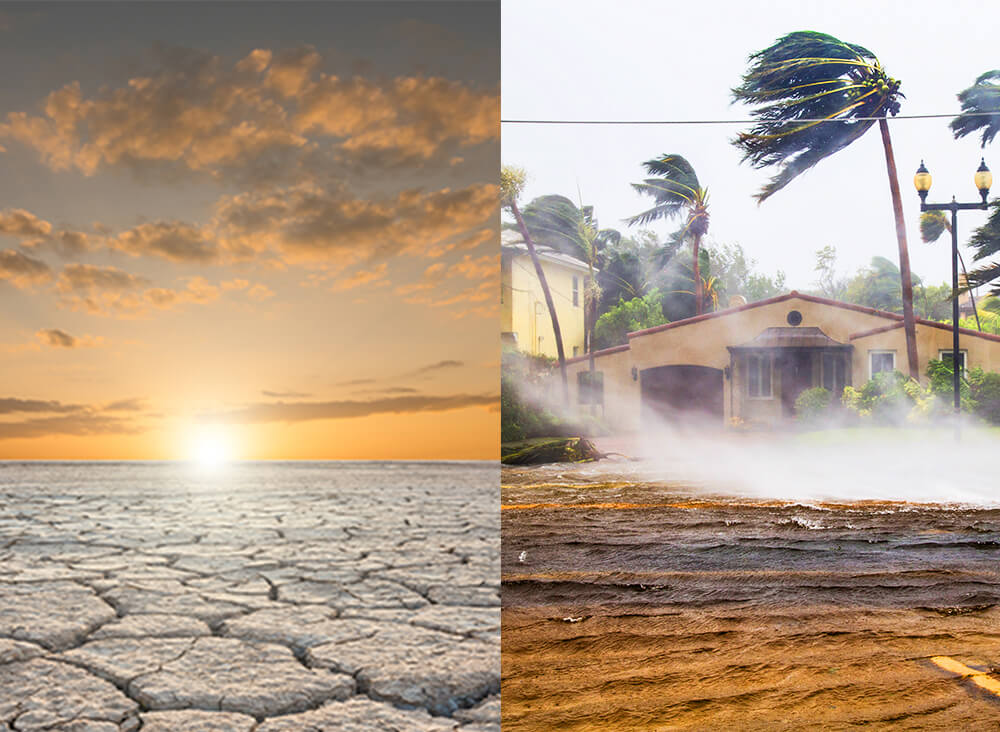-
Climate risks: Too big to ignore
The last day of summer in the Northern Hemisphere was September 22nd, and cooler temperatures will surely be welcomed by many. Europe and China recorded their hottest-ever summers since recordkeeping began in 1880, according to NOAA’s National Centers for Environmental Information. Meanwhile, the US recorded its third-hottest summer by the same metric.
The summer has also been a reminder to consider both the physical and transition risks associated with climate change. Reducing carbon emissions, which is key to preventing further long-term escalation in events such as these, has come under renewed urgency given recent geopolitical tensions.

Economic impacts extended across the world. Transport throughout the UK ground to a halt for part of July as temperatures reached levels never imagined by the Victorian engineers who designed its railway network. A lack of rainfall left crops parched and caused key rivers such as the Rhine to reach levels so shallow that they were not navigable by the barges that have become a key part of Central Europe’s supply chains. In some areas of the US, the key problem was too much precipitation, with extreme rain causing severe disruption in Kentucky and Saint Louis; flooding contributed to a drinking water crisis in Jackson, Mississippi. In China, precipitation in Jiangxi and Anhui provinces in July and August was 60% less than a year ago. Record heat and drought across China, including parts of the Yangtze River, caused a shortage of hydro-power and halted shipping. Relief from this year’s extreme temperatures is coming at the same time as what looks to be another severe season for hurricanes and wildfires takes shape. Hurricane Fiona left all of Puerto Rico without power before making a rare assault on Canada’s maritime provinces, and Hurricane Ian is likely to be the worst hurricane to hit the west coast of Florida since 1921.
The summer has also been a reminder to consider both the physical and transition risks associated with climate change. Reducing carbon emissions, which is key to preventing further long-term escalation in events such as these, has come under renewed urgency given recent geopolitical tensions. Most European countries face a severe energy crisis triggered by Russia’s war in Ukraine and the cessation of natural gas flows through key pipelines. Renewables like solar power have the dual benefit of aiding decarbonization and reducing dependence on Russian fossil fuels.
As real estate investors, we are concerned about the impacts that climate change will have on our investments. On the physical risk side, it is critical that we become aware of the extent to which climate risk hazards may directly impact our portfolios and prepare our buildings to be resilient to climate change. The first step is to identify the physical climate hazards that will impact specific buildings, measure the exposure to those hazards in aggregate within the portfolio, and then get to work managing, mitigating, and strategizing around these risks.
To get the data, we have a plethora of climate data providers and forecasters to choose from, but it can be overwhelming to narrow the field down. When we reviewed multiple data providers, we found considerable inconsistency in how metrics are defined, and wide variation in risk scores for the same hazard at the same property.
Our recent report, “How to Choose, Use and Better Understand Climate Risk Analytics”, researched and written in partnership with the Urban Land Institute (ULI), is an excellent overview of the challenges faced by first-time consumers of climate data. The paper outlines physical climate risk basics, identifies differences between data providers to be aware of, and raises a call to action to standardize the outputs in ways that are most meaningful and useful for real estate, with transparency that enables apples‑to‑apples comparisons across models.
Once the data is in hand, the next step is to manage the risks at two levels: at the property level, through evaluating both existing and potential new hardening strategies to be more resilient against particular hazards; and at the portfolio level, through assessment of exposure concentrations and consideration of how climate risk informs overall portfolio construction strategies. And lastly, we must continue to monitor these risks on a regular basis, because one thing we know for sure is that our climate will continue to change, and more disruptive and damaging seasons like the hot summer of 2022 are likely to recur.

Dec 02, 2024
PERE: Sustainable investing
Ryu Konishi and Julie Manning spoke to PERE about the importance of sustainability as part of investment decision-making.



